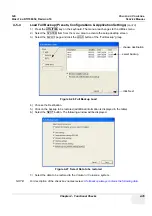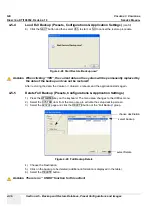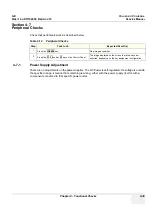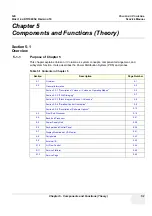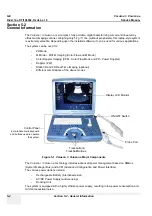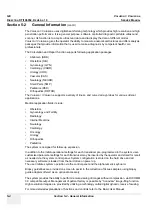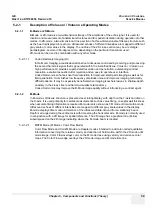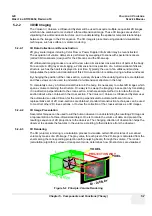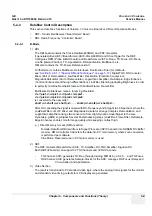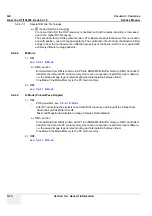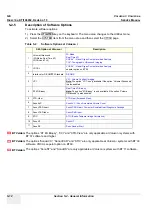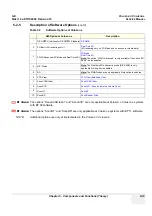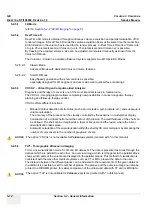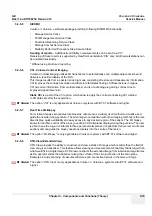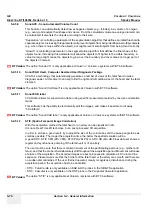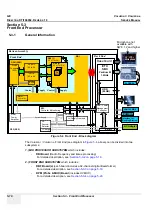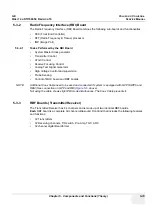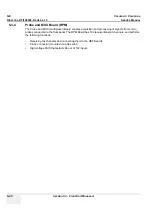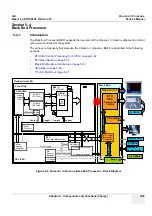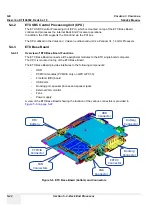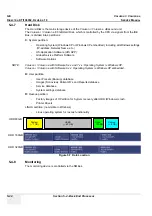
GE
V
OLUSON
i / V
OLUSON
e
D
IRECTION
KTI106052, R
EVISION
10
S
ERVICE
M
ANUAL
Chapter 5 - Components and Functions (Theory)
5-9
5-2-4
Dataflow Control Description
This section describes functions of Voluson i / Voluson e Boards vs different Operation Modes.
•
RBF - Transmitter/Receiver “Beamformer” Board
•
RBI - Radio Frequency “Controller” Board
5-2-4-1
B-Mode
1.) RBI
The RBI board contains the Clock-Oszillator(60MHz) and PRF-Generator.
It generates(drives) BF(=Beamformer)-ASIC-Clock(60MHz) and Shot-Trigger for the RBF.
Configures RPM (Probe & MUX board) and Beamformer with TX-Frequ, TX-Focus, RX-Focus,
LineNo (lateral Position), TX- Apodisation, RX-Apodisation, Multibeam, etc.
RBI also contains the TX-Power-Reference-DAC.
Furthermore it contains Multibeam-DeInterleave, Subtraction Filter (for HI-Mode,
see:
Section 5-2-4-1-1 "Special B Mode Techniques" on page 5-10
), DigitalTGC, DC-Canceler,
Mixer (Part of Demodulator), LowPassFilter, Decimation (Pixelrate Conversion),
MagnitudeCalculator (Part of Demodulator), Logarithmic Amplifier, Re-Sample, Edge Enhance
(Contrast Enhancement through differentiation), LineFilter, Blending (adapting Brightness in order
to perfectly combine Nearfield-Frame with Farfield-Frame, FrameFilter.
Multibeam-DeInterleave means: Incoming Pixelorder
shot1
pix1
-shot2
pix1
-shot3
pix1
-shot4
pix1
-
shot1
pix2
-shot2
pix2
-shot3
pix2
-shot4
pix2
...
is converted to the new order:
shot1
pix1-
shot1
pix2-
shot1
pix3..... -
shot2
pix1-
shot2
pix2-
shot2
pix3.....
After DC-cancelling the signal is mixed with RX-Frequency and brought to LF-Spectrum, where the
LowPassFilter cuts HF. Mixer and Magnitude-Calculator arrange Complex Demodulation, and
Logarithmic Amplifier arrange the conversion from High-Dynamic LinearSignal to the Low-
Dynamik(e.g.8Bit) Log-Signal. Several Postprocessing steps (LineFilter, FrameFilter, ReSample,
Edge Enhance) enable smooth image quality while keeping contrast high.
a.) Direct Memory Access (DMA) section:
B-mode-Data from RBI is written via Signal Processor (SP) Channel 0 into SDRAM Fifo Buffer
memory. DMA Controller 0 transfers the data into PC main memory where scan conversion
is performed per software.
Cine Mode: Reserved area in PC main memory is used.
2.) RBF
The RBF consists of Beamformer-ASIC, TX-Amplifier, RX-TGC-Amplifier, Signal-ADC.
Each RBF (
2
boards) can support 32 TX-Channels and 32 RX-Channels.
-
TX-Channel: ASIC generates TX-Freq through dividing 60MHz by 2,3,4,5,... and TX-Focus.
-
RX-Channel: ASIC generates Sample-Clocks for the ADC, manages RX-Focus (Delay and
Chain-Adder) and Apodization.
3.) Video Section
The result is transferred to PC standard video logic, where the analog VGA signals for the monitor
and standard video timing outputs for LCD display are generated.
Summary of Contents for Voluson i BT06
Page 2: ......
Page 11: ...GE VOLUSON i VOLUSON e DIRECTION KTI106052 REVISION 10 SERVICE MANUAL ix ZH CN KO...
Page 44: ...GE VOLUSON i VOLUSON e DIRECTION KTI106052 REVISION 10 SERVICE MANUAL xlii Table of Contents...
Page 514: ...GE VOLUSON i VOLUSON e DIRECTION KTI106052 REVISION 10 SERVICE MANUAL IV Index...
Page 515: ......

